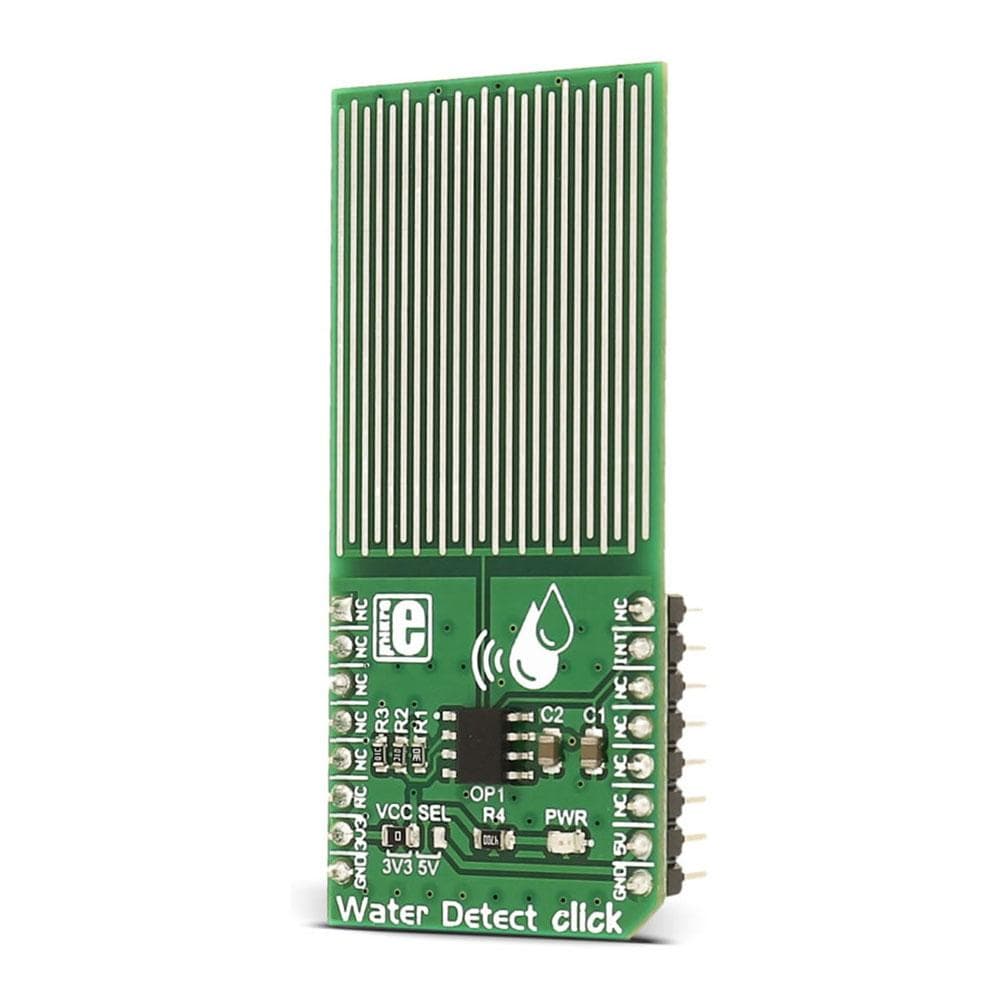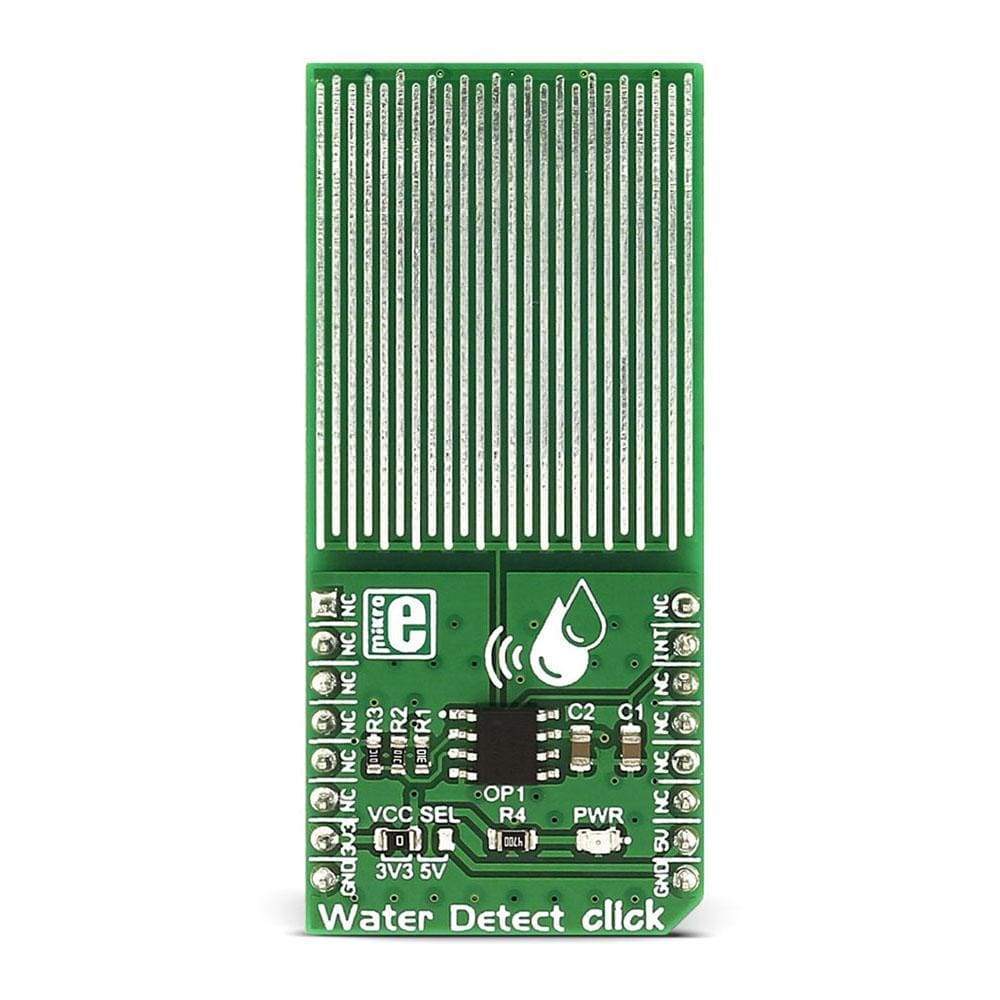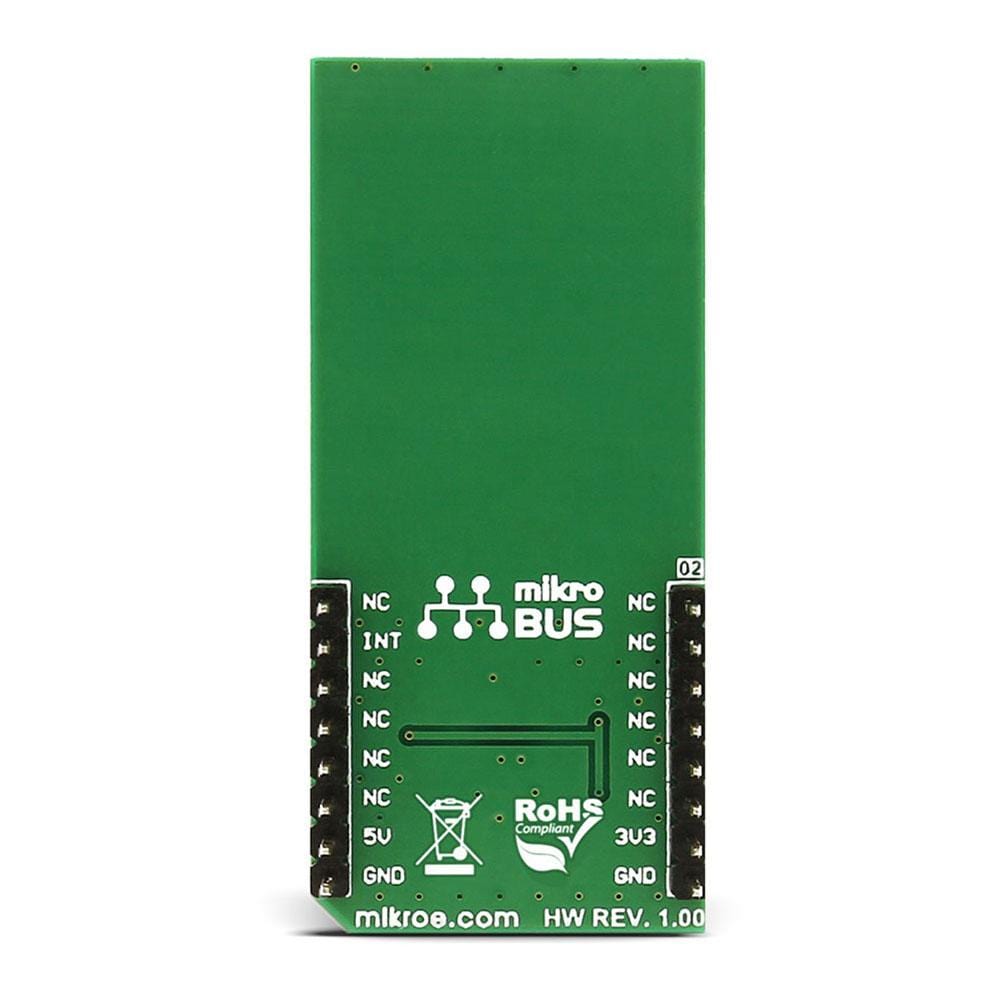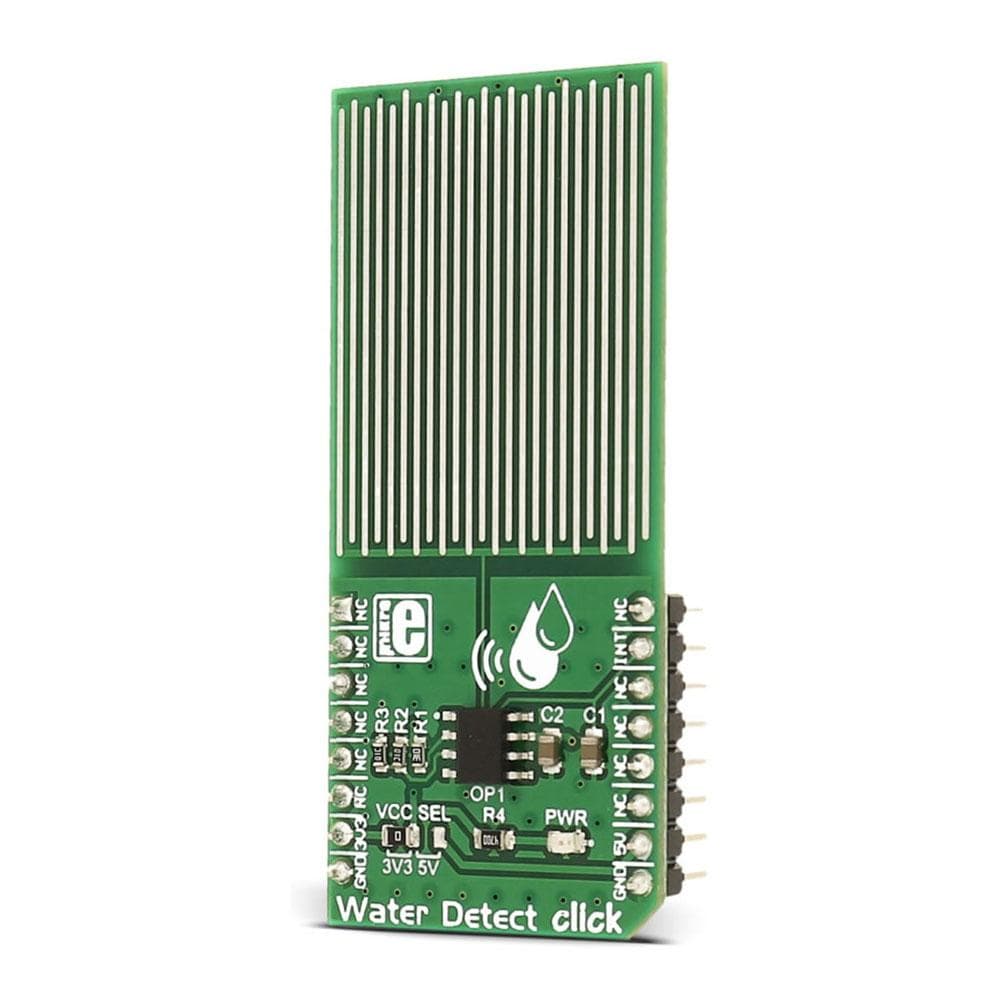
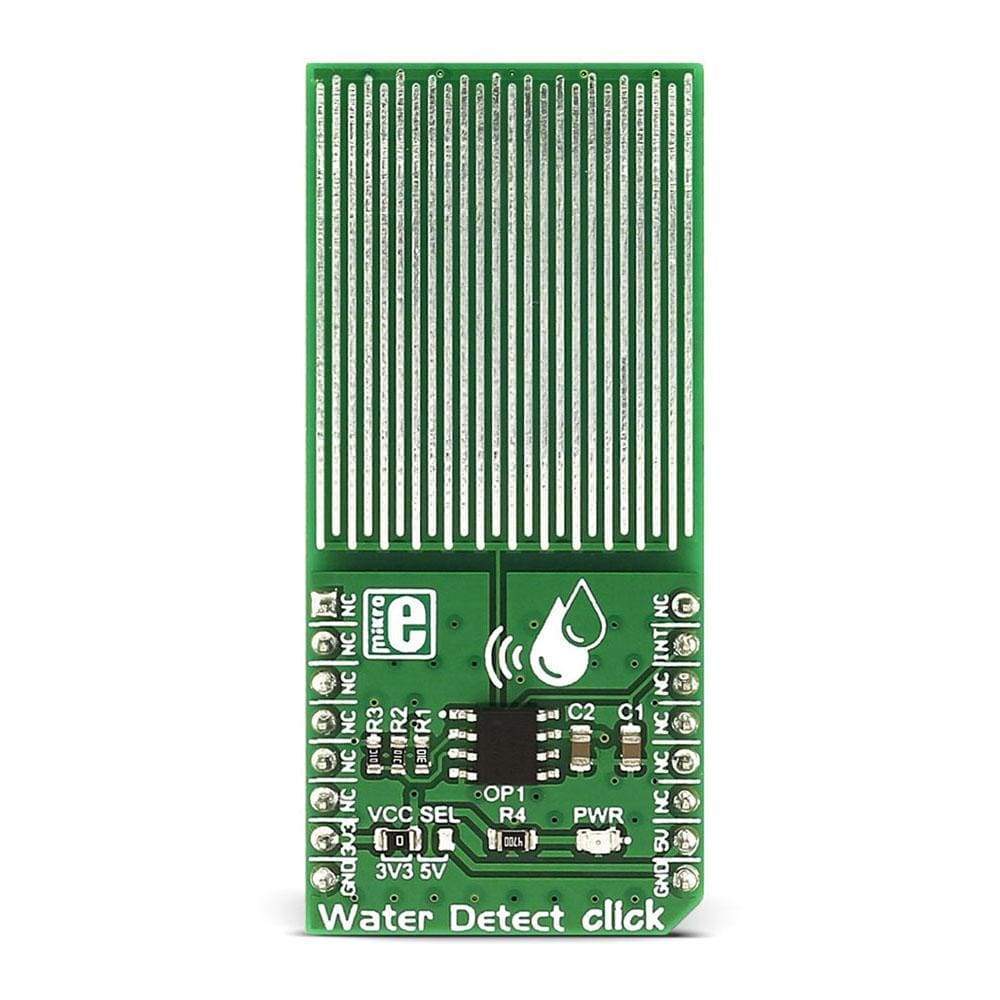
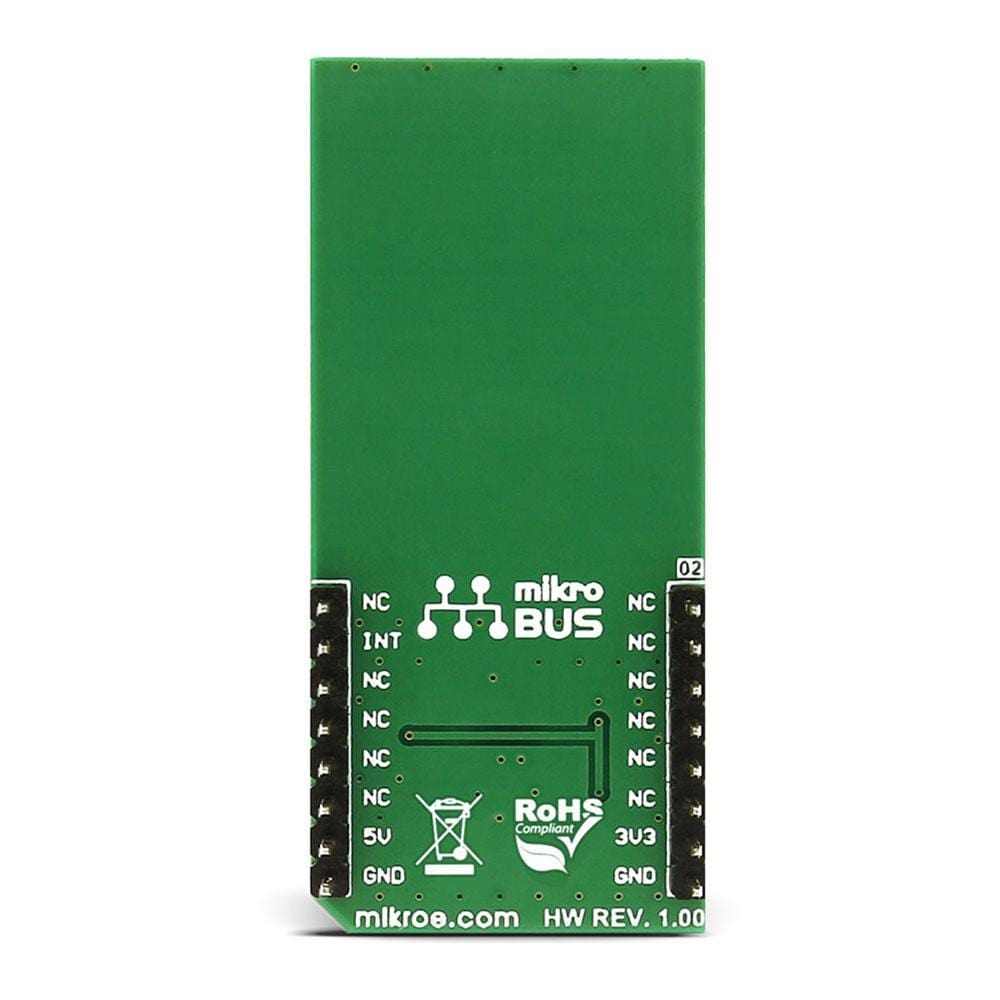
Overview
Avoid plumbing and water leakage disasters!.
The Water Detect Click Board™ is used for detecting water and other electro-conductive liquids. If the detection area is wet the output of Microchip's MCP606 CMOS op-amp will go positive, signaling the presence of liquid.
The Water Detect Click Board™ can be used as a household flood alarm sensor, rain detector for smart buildings or for water tanks that act as a limit switch for a pump.
Downloads
Évitez les catastrophes de plomberie et de fuites d'eau ! .
La carte Click Board™ Water Detect est utilisée pour détecter l'eau et d'autres liquides électroconducteurs. Si la zone de détection est humide, la sortie de l'amplificateur opérationnel CMOS MCP606 de Microchip devient positive, signalant la présence de liquide.
Le Water Detect Click Board™ peut être utilisé comme capteur d'alarme d'inondation domestique, détecteur de pluie pour les bâtiments intelligents ou pour les réservoirs d'eau qui agissent comme un interrupteur de fin de course pour une pompe.
| General Information | |
|---|---|
Part Number (SKU) |
MIKROE-2786
|
Manufacturer |
|
| Physical and Mechanical | |
Weight |
0.022 kg
|
| Other | |
Country of Origin |
|
HS Code Customs Tariff code
|
|
EAN |
8606018711642
|
Warranty |
|
Frequently Asked Questions
Have a Question?
Be the first to ask a question about this.

